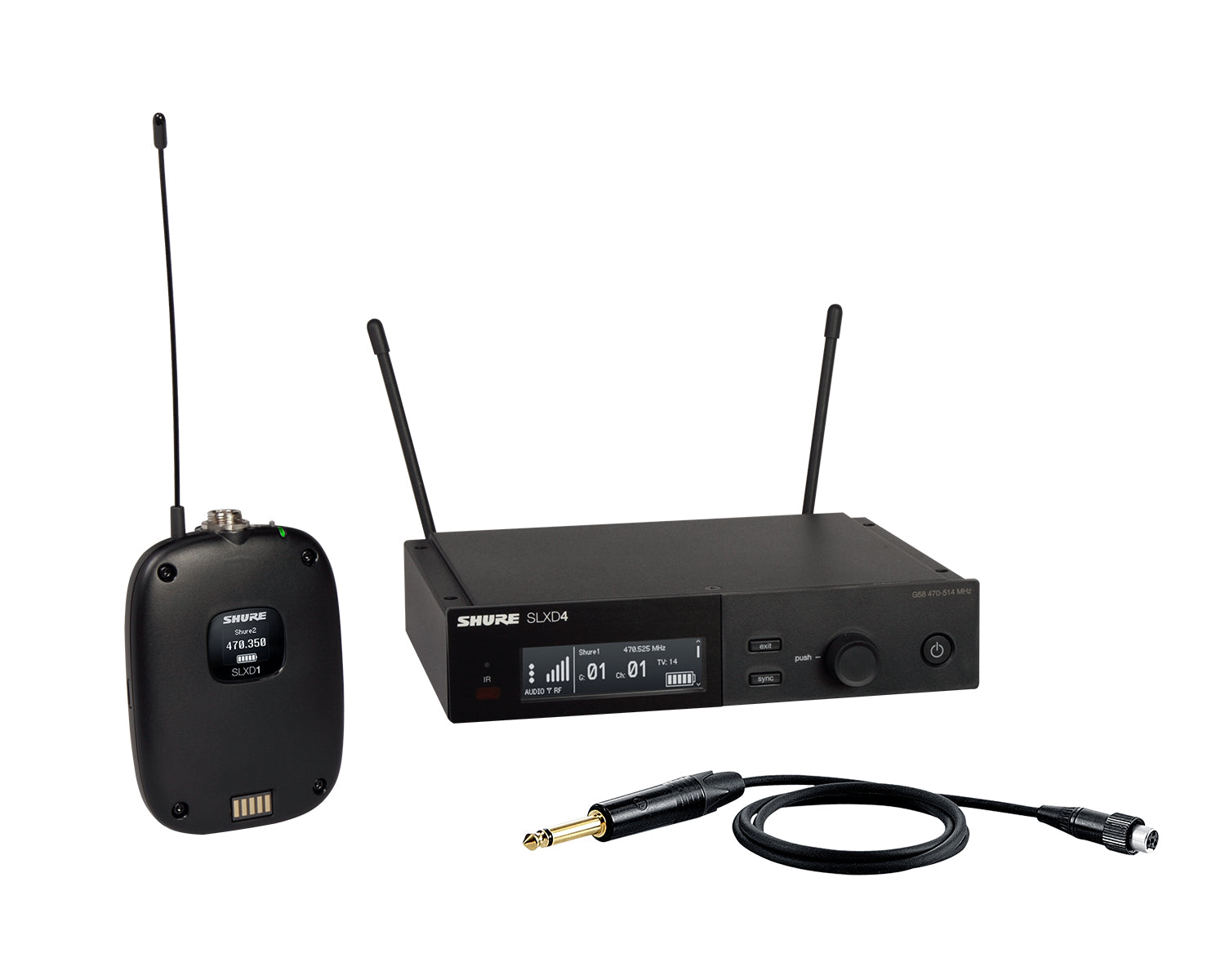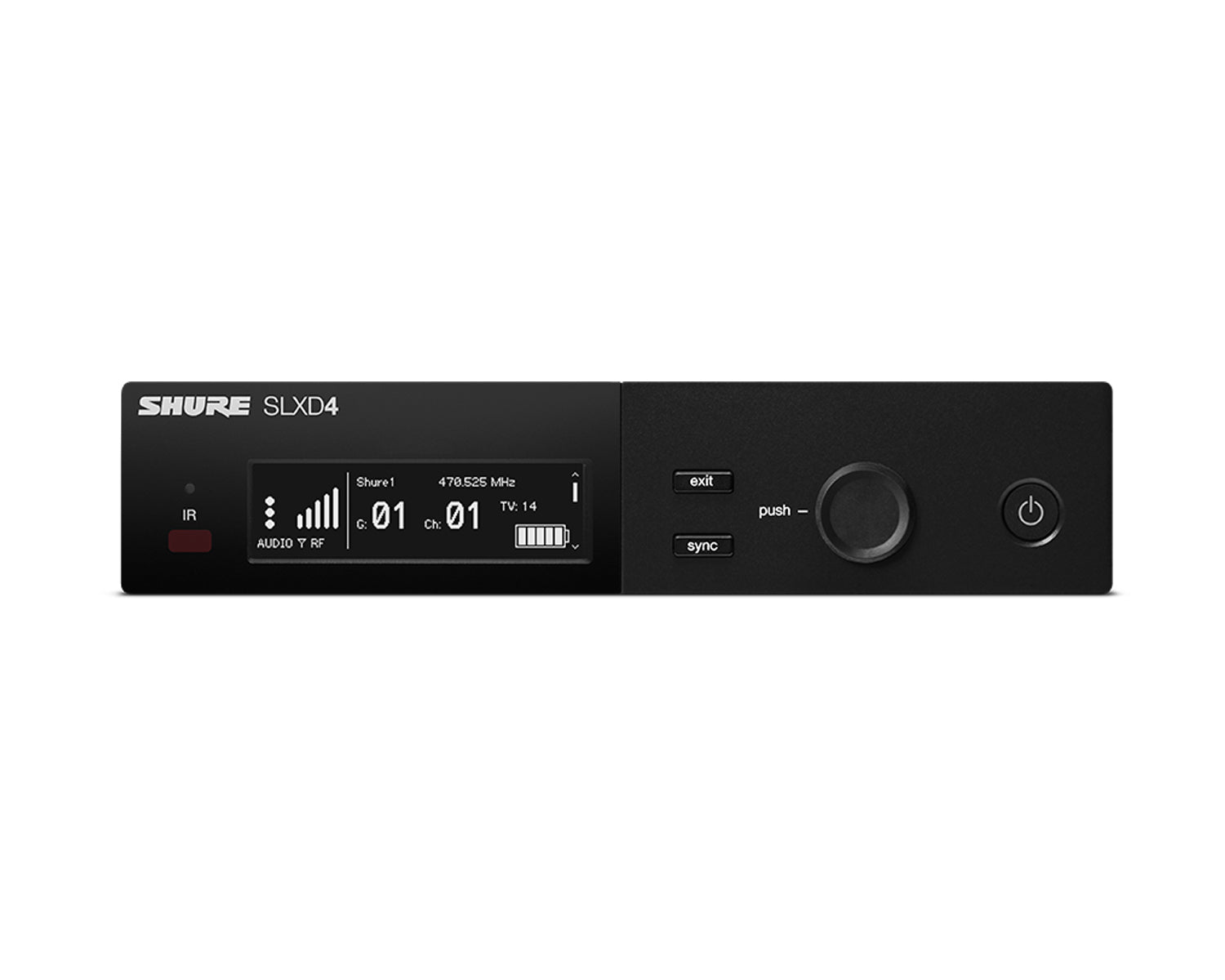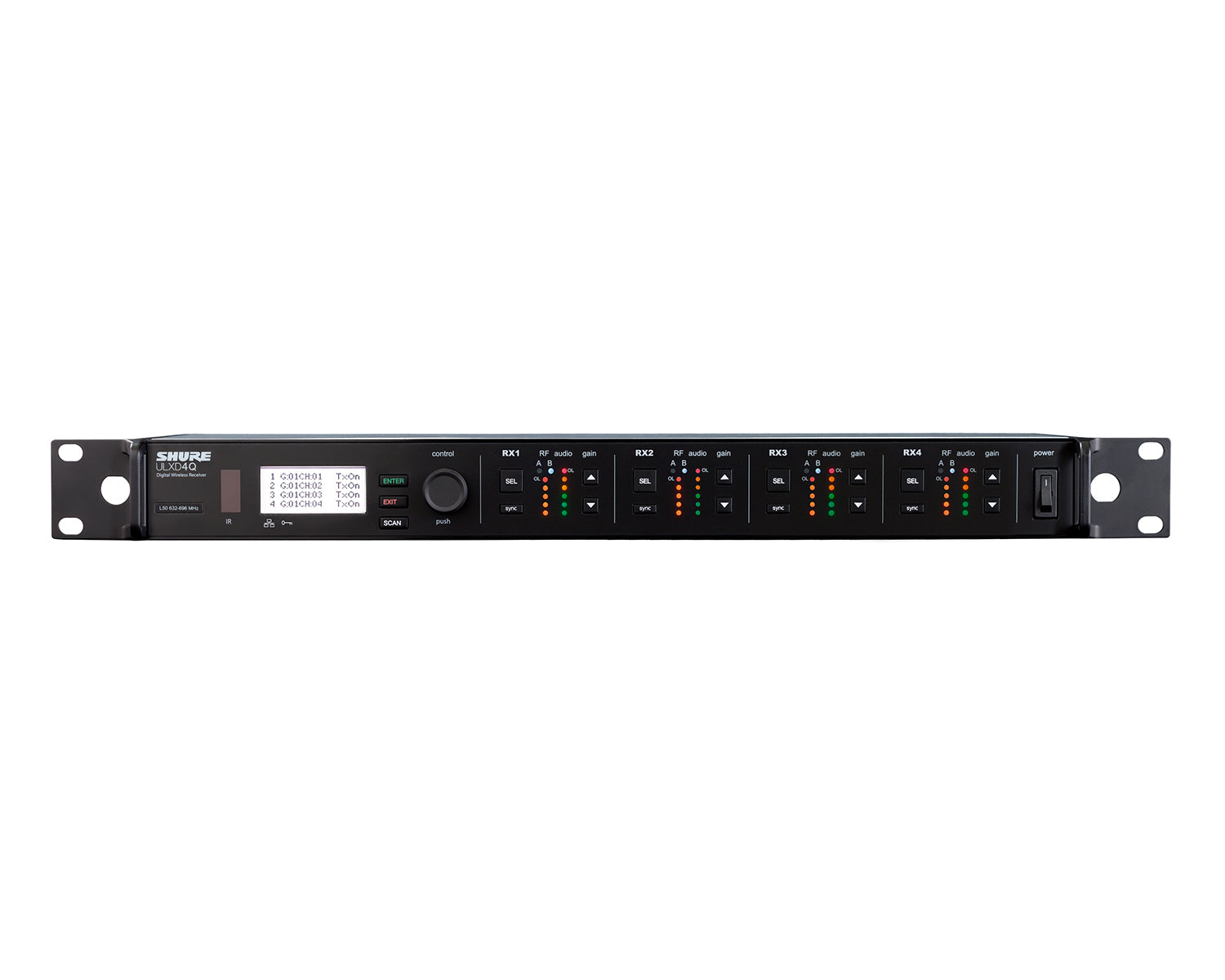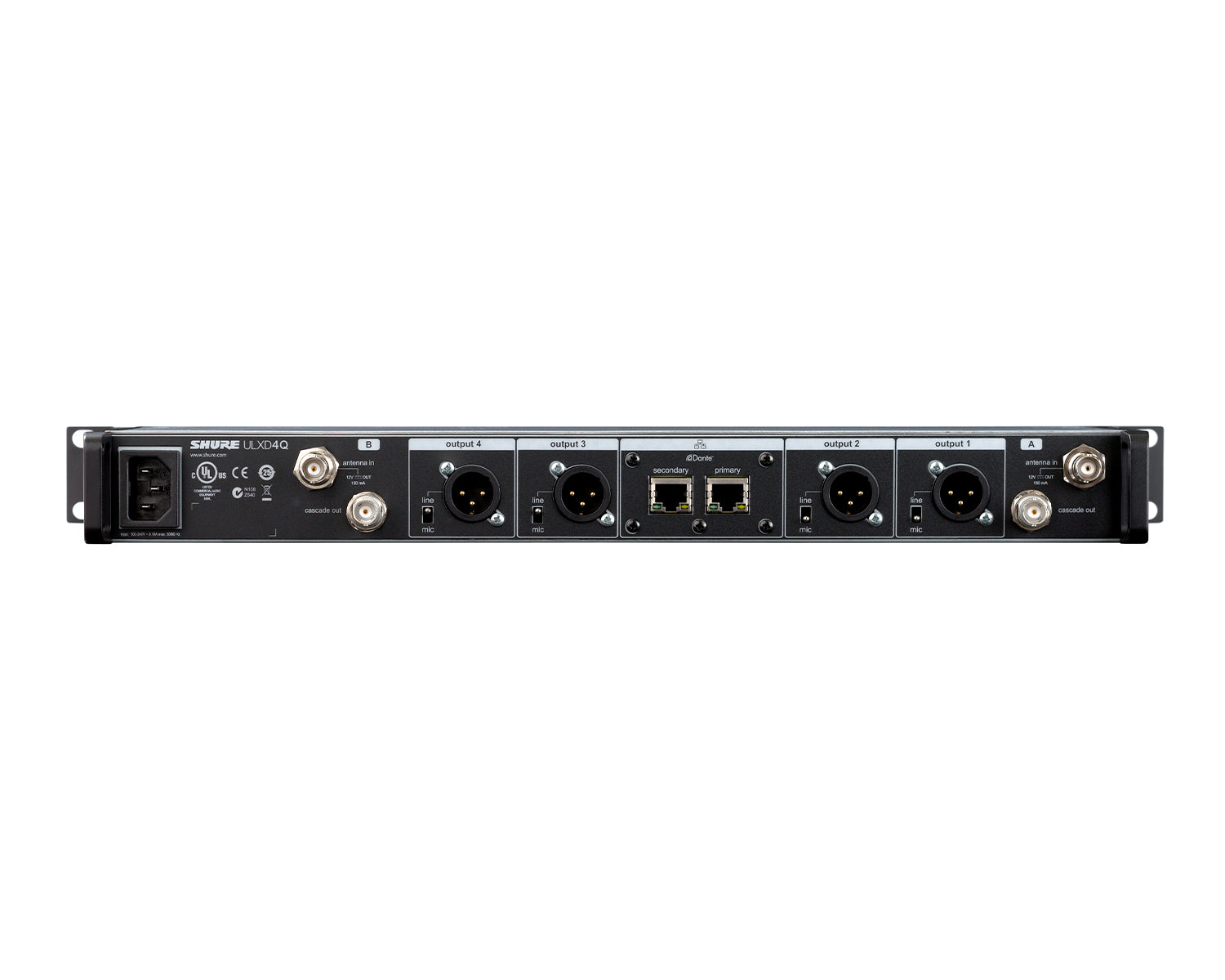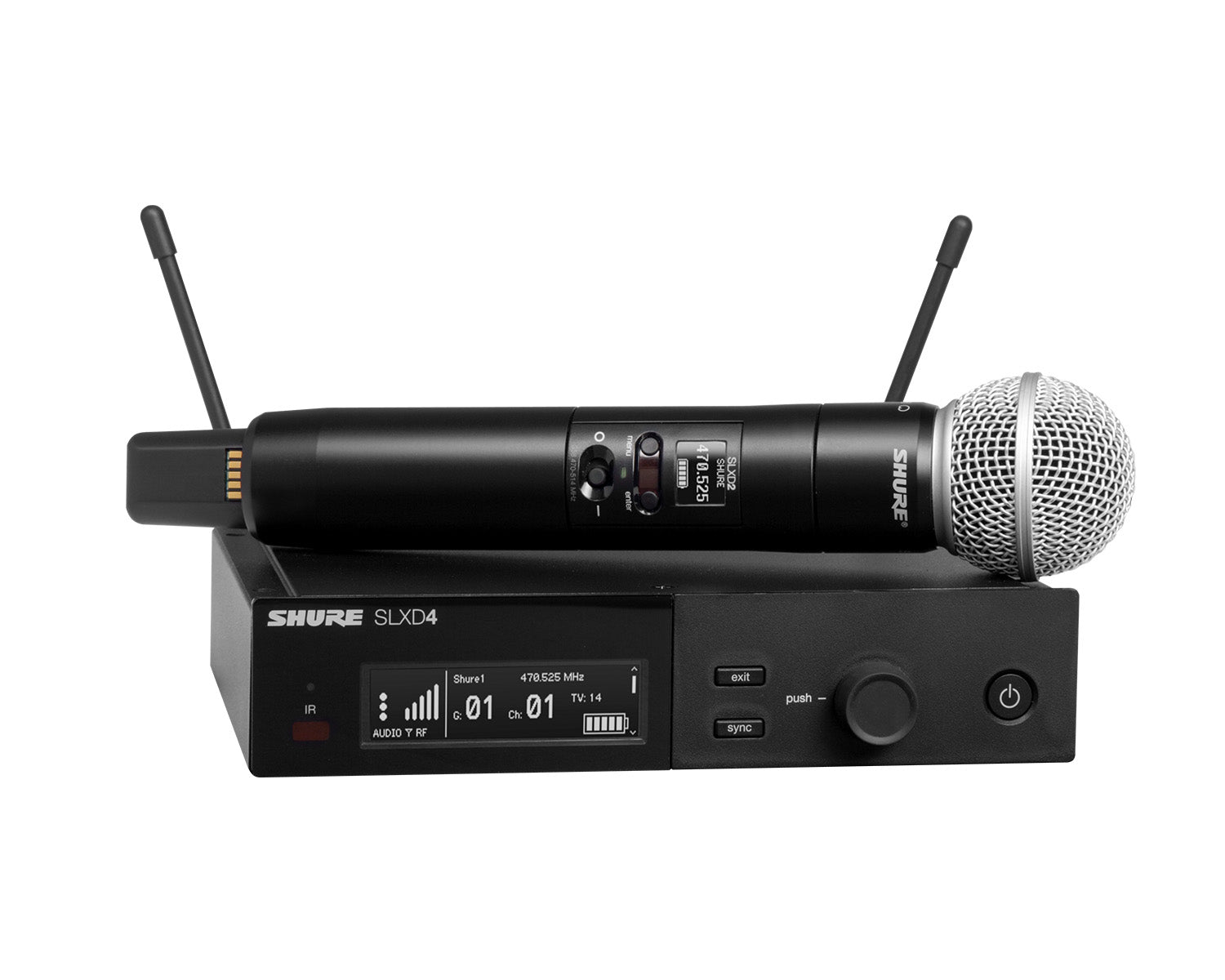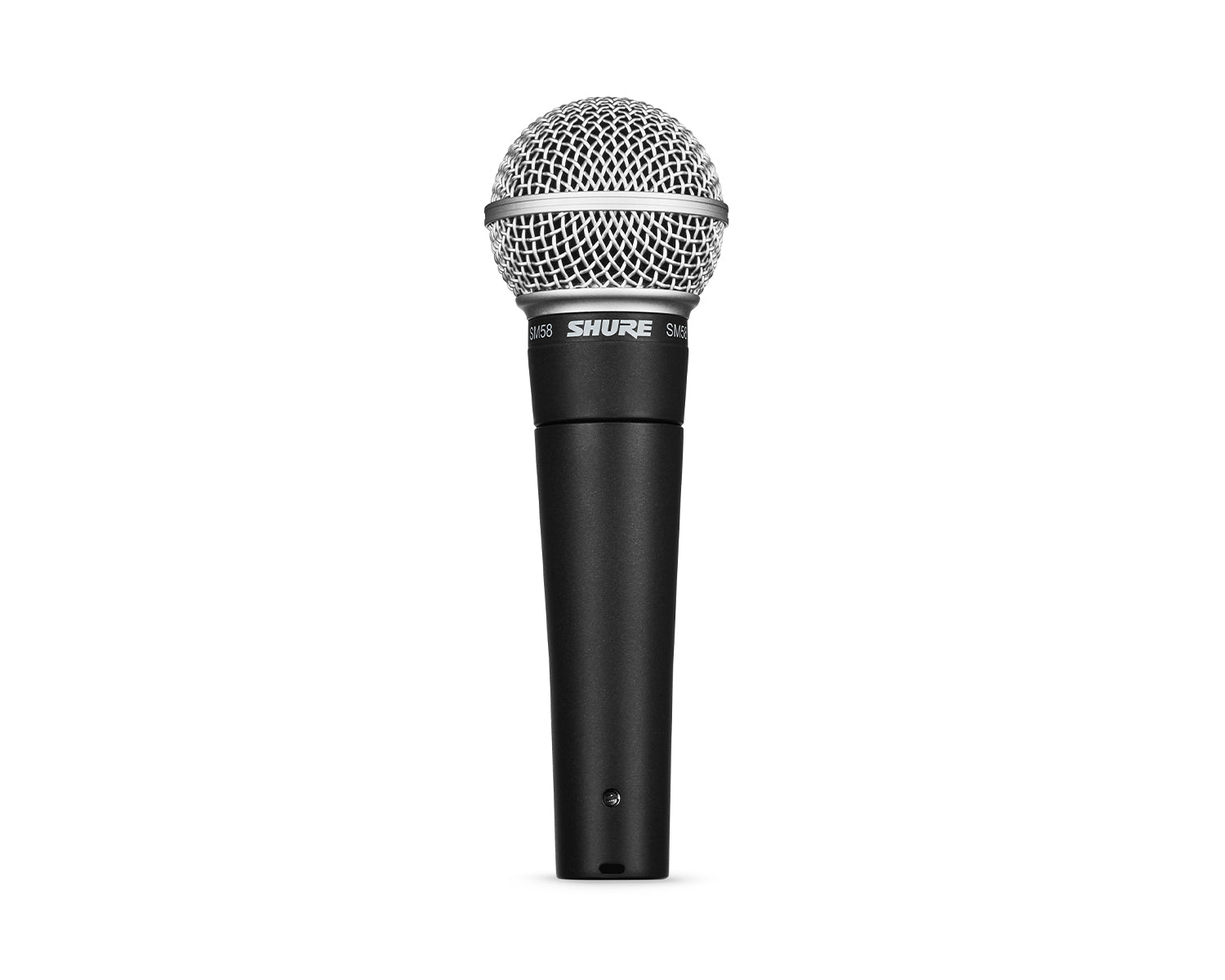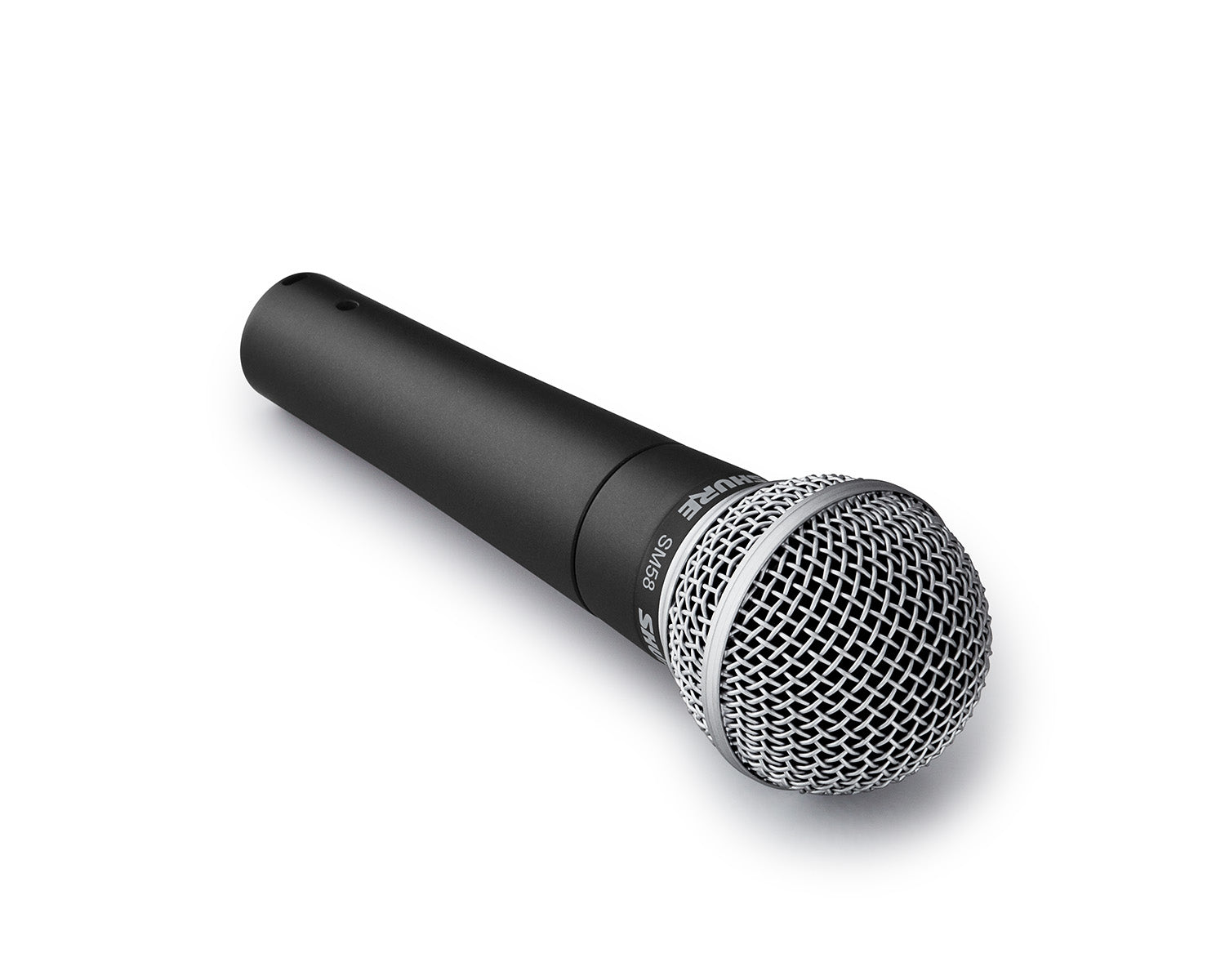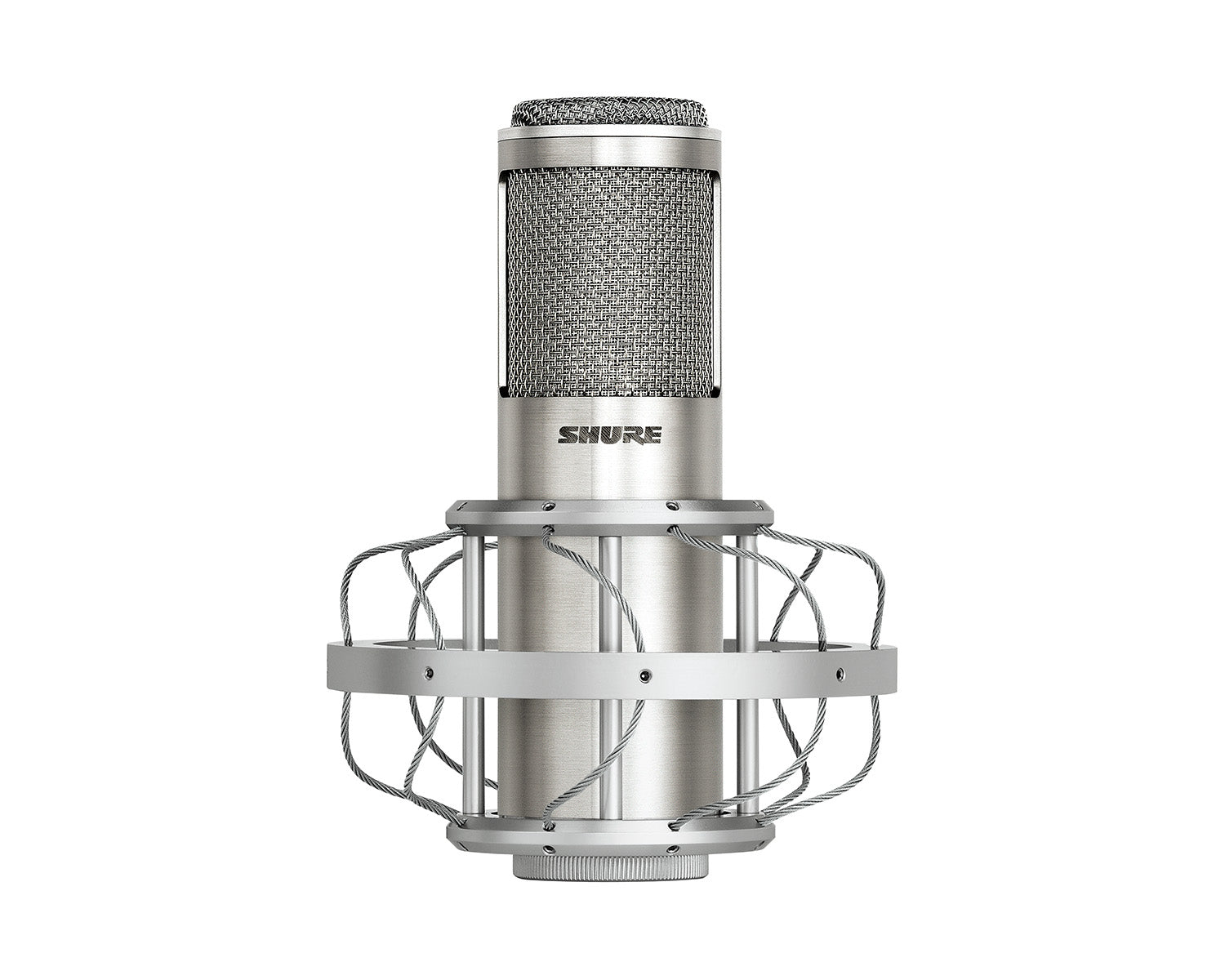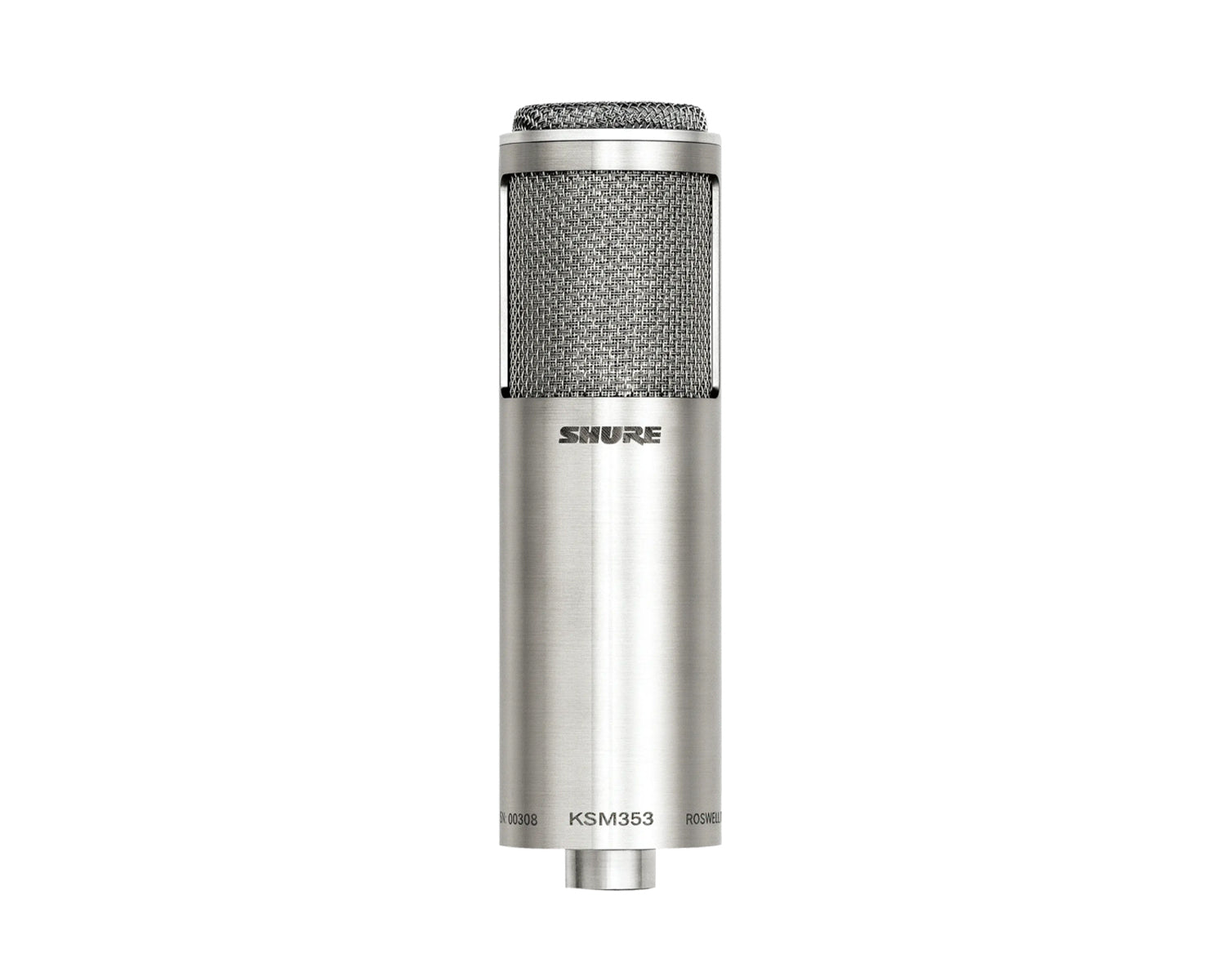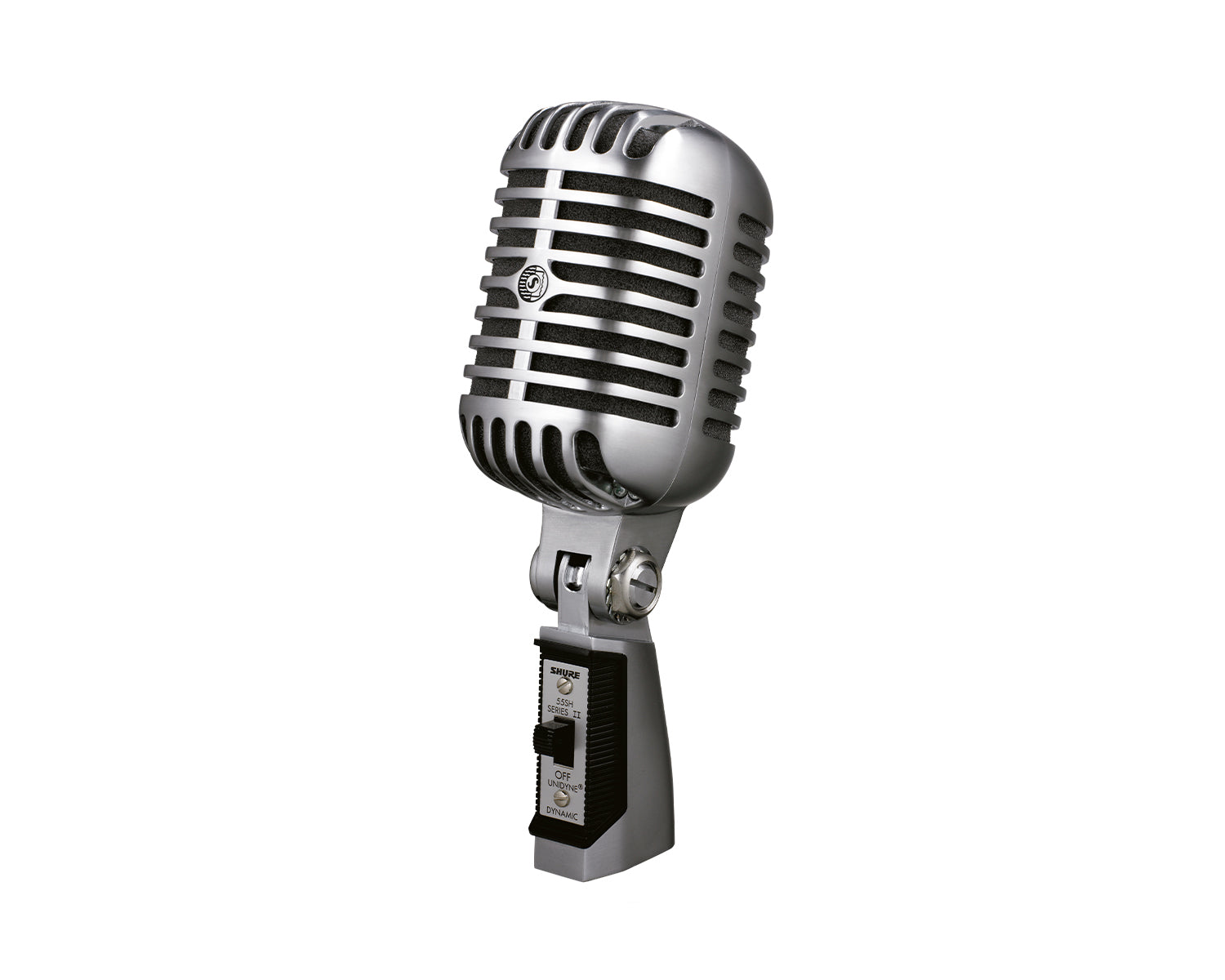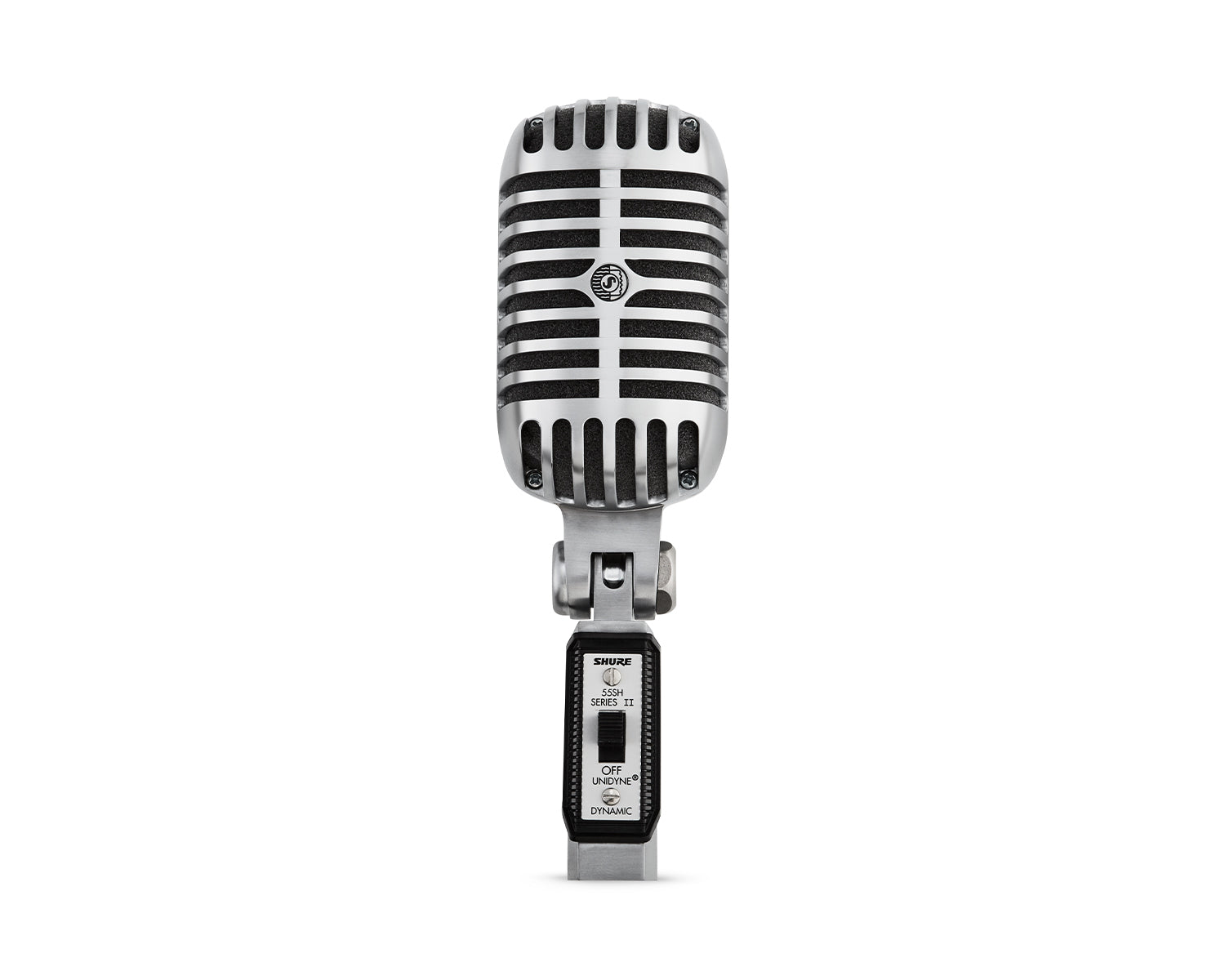A Bit of Context...
As part of Shure’s incredible 100-year anniversary—and our year-long partnership with the legendary audio brand—we sat down with Shure expert Jack Drury to answer all your burning questions about Shure’s history, wireless systems, and their most iconic microphones.
With over a decade of experience in the audio industry and as a gigging musician himself, Jack brings a wealth of real-world knowledge to the table. His insights go beyond the tech specs, diving into what it truly means to live and breathe audio engineering.
To get the inside scoop, our very own Sales Manager Glenn Smith asked the big questions like: With the SM58 being such an icon, where does the new Nexadyne fit into Shure’s lineup?
Catch the full Q&A series now on our YouTube channel, and join the conversation.

Wireless Systems
1) In your experience Jack, what is the most overlooked step in a wireless setup?
Okay, this is a really good question, I love this.
The first is, and this sounds really simple but, it’s physically where is the rack hardware going to go? People don’t think about this but it impacts your antenna position. What cables you’re going to get? How do you run the power? If you want to get your antennas close to the stage and high up but your rack is miles away, then you’re going to have to invest in some very expensive low-loss cable, which might not be the best way to do it when you get to site.
So, first where is the rack hardware physically going to go?
My second answer is about accessories. I spend a lot of time talking about handheld transmitters and body pack transmitters, rack hardware, antennas, even distribution as well, but people rarely think about battery charging. How do I want to manage that? Do I want to go rechargeable? Do I want them in a rack charger? Simple things like that, that are really going to affect your day-to-day use of the system, are things that people don’t often think about.
2) What are the common mistakes specifically with antenna distribution?
The most common mistake with antenna distribution is: not doing antenna distribution.
The amount of sites that I go to where its “oh, I’ve got a load of stuff, four or five systems and I’ve got a rack with a load of punch holes and antennas sticking out the rack, so I have 10 antennas” – if that’s you at home and that’s your wireless system, please phone Leisuretec and ask them to help you out! Because that’s going to cause you all sorts of problems.
What starts to happen is the antennas array together. They start to act together with their magnetic field distorting it, and you don’t get any directivity. It can be very inconsistent and ADD to RF problems on site. The most common problem I get with antenna distribution is not doing antenna distribution.
It's actually very straight forward, all we’re going to do is take two antennas in and distribute out. SLX-D will allow you to have up to eight together and will also allow a cascade. ULX-D and SLX-D, you can run up to 32 channels off of one distro.

3) With RF Coordination being historically difficult to set up and time consuming, where does Shure sit with this out of the box?
The biggest issue is if you get it wrong you can cause yourself all sorts of problems. You do have to think about RF coordination. We have tried our best to make it part of the product, so all of our products have a group scan feature, which will scan the entire bandwidth of the system, and give you a number of channels to use.
In SLX-D, we can actually network that together. So, you can select one unit to do the coordination for everything else and then deploy it. That speeds things up, makes it much easier, and of course we have industry leading software and UAVs Wireless Workbench.
If you're doing really complex stuff, you can plug any of our systems upwards into this workbench and use that to do your coordination for you. We also offer training to demystify some of the intricacies of this process as well, and hopefully make it more exciting for our users as well.
4) At what stage should they start thinking about ULX-D?
ULX-D is a really interesting product in our portfolio now. It was our first digital wireless system way back in 2011, and it's still our biggest selling wireless system today.
If you had an SLX-D system a few years ago that was narrow tuning bandwidth like a single rack or a dual system, ULX-D is a really interesting place to look if you want quad channel density. But what we've tried to do is take a lot of the features of ULX-D and bring it in to that mid tier platform.
The current version of SLX-D we've got, is wideband tuning, it has a lot of the features that ULX-D's got. For me, it represents tremendous value for money because we're pulling features from our top tier wireless system and offering it to the mid tier.
There are still some reasons why people would go ULX-D. The form factors for transmitters are slightly different, different materials are used - if you want Lemo you're going to need to use ULX-D. There are some integrators and companies who have standardised on ULX-D. And there are some other frequency variants of it which make it useful.
But for me today, if you're an SLX-D user of three years ago and you're looking to upgrade, I would definitely recommend staying in the SLX-D field.


5) We get asked a lot about wireless encryption. What systems have it and why do we need it?
Encryption is important because, in theory with an analogue wireless system all we're doing is taking a carrier and frequency modulating it. We're moving it left and right to paint the picture of the audio. Every analogue wireless system on the market operates in broadly the same way, and you can buy very cheap devices to demodulate it.
So let's say we were working for a big law firm, we were having a very covert discussion about things that would influence market rates, the outcomes of court cases - things of that nature. I could camp outside the office building with a very cheap scanner and listen in to the conversation we were having if the systems were not encrypted.
So encryption is only possible on digital systems because we have to have some way of scrambling the information.
We offer encryption on everything QLX-D upwards. So QLX-D, ULX-D and Axient Digital offer 256 encryption, which is an industry standard. It's a never-been-broken, super complex, encryption key. At the point you IR sink your transmitting device, the encryption and decryption key is shared as a 1-to-1 link. Even if I had a QLX-D system outside the building, and I knew what frequency we were on, it would still not be able to modulate that information because we’re messing up how we're modulating it over the air and only the assigned transmitting device has the key to demodulate in the correct way.
6) With spectrum space, what are Shure doing to future-proof this?
RF spectrum space is reducing. We are counteracting this by making our products wider tuning, which sounds like a weird thing to do but what that does for our users is mean they have access to all of the spectrum that is left. Alongside that, we are making our portfolio digital. The only analogue product left for us is BLX. Everything else is digital.
We have introduced a new digital IEM system as well. This allows us to have more linear components in our systems, which means we can squeeze a lot more channels in, making the most of the spectrum we've got left. And we're working with organisations such as Berg and APWPT, to continue lobbying governments and mobile phone operators around the world to protect the spectrum that we've got left.
7) What’s a question do you get asked most by customers?
Every single question that I get at the moment is related to, "wireless is complicated! There's loads of manufacturers out there, I don’t know what I want, I’ve got option paralysis!" [Option paralysis is the state of being unable to make a decision when faced with too many choices] Where is the truth in any of this? The amount of people that buy things wrongly because they've been misinformed is huge.
So you go to somewhere like Leisuretec and you have an honourable conversation and ultimately you will be exposed to all manufacturers and brands, not just ours (Shure), but we've all done our jobs well If the customer comes out with the product that they actually want at the end of it.

Shure Microphones
8) What makes a Shure microphone specifically reliable for a high-stakes environment, like a tour?
A tour is a really good example. There are two things happening that we've got to consider. The first is how super complex productions with multiple consoles are. There's one tour I'm aware of that's got three consoles on the monitors and two in front of house, and you've got to tie all of that together in one complex network with complex amplifiers and an array of equipment.
Shure have to be certain that what we're putting into that complex network is going to work reliably.
The second issue is there's zero-to-no tolerance for failure of any product on tour. If a tour goes out and there's an issue, it will be in the news if it's high stakes enough. We're relied upon to make products that have a very high level of durability.
Most of that comes from our military history when we started making products to specification in the 60s, like the SM58. All of our products go through that same rigorous testing, and we test and test and test in Chicago to make certain that these things can go out into a warzone and still be operational.
9) Lets talk about the Nexadyne 8. Where does this fit in Shure’s portfolio and where would you use it over the SM58?
They're both designed to do the same job. They're different in that they have slightly different sound profiles. When the SM58 came to market, we had point source speaker systems, ineffective amplification systems with lots of distortion, which meant whatever you were capturing and trying to convey to your audience was going to be limited by the speaker and the overall design.
In 2025, we have much more linear systems and amplifiers. So the input transducers have to change a little bit and I do have some engineers who still really enjoy what the SM58 does to a vocal without having to touch it with the EQ. But there are also engineers who want to have more tools, and that's where this product line comes in. It's a whole new transducer principle, where we tie two complete transducer elements together to get specific sound profiles.
So these (Nexadyne 8) really just sound like an SM58, but more. More low, more high, more options for the engineer.
And if you’re an upcoming artist and want to really define your sound and your look, these are both great options. We’ve made Nexadyne as part of our 100 years to really cement ourselves to our artists.

10) Why is it important to choose the right polar pattern and how does this integrate with Shure microphones?
I've got two examples for you. Lets do a vocal mic example first, lets say I’m going to sing into this (Nexadyne 8) in a small bar, pub, or a club. I haven't got in ear monitors and I'm going to use wedge monitors to hear myself back.
The polar pattern on the microphone is going to define where that wedge monitor can go.
A cardioid microphone means that all of the audio goes in the top and there's a null spot at the back, which means no audio gets picked up here. That means my wedge monitor is going to go directly behind the microphone. So the audio coming back for me to listen to goes into the null spot rather than into the hotspot of the mic.
Super cardioid has a tighter pickup pattern, and the null spots are at 45 degrees to the edge of the microphone either side. So that means if I put my wedge monitor directly behind a super cardioid, I'm going to generate that feedback loop because it's going to be a hot spot on the back of the mic. What I need to do is move it 45-degrees to the side and because there's two null spots, I can have two wedge monitors giving me stereo monitoring.
The other really good example is when you mic up a drum kit. If I take a tom mic, I want it to just pick up the sound of the tom. I don’t want to get any spill from the snare or the kick drum or anything like that. So polar pattern choice and positioning become very important. It’s possible to mic up a drum kit and get no spill whatsoever. What we tend to try is to give you the tightest polar pattern possible with a very Linea off-axis response, which means any spill is still kind of mixable.
But ultimately, a good polar pattern choice for your drum microphone is going to make your mixing life much better and allow you to mix a better product for your audience.

11) I have always wondered how Shure mics can handle extreme SPL levels like with drums or brass?
For dynamic microphones, it's quite easy because it's just a magnet. So you can shout into a magnet as loud as you like, and it's going to be very difficult to make it distort. In our portfolio it becomes quite interesting when we look at our condenser microphone capsules and our ribbon microphone capsules.
So for condensers, it's just about putting good components in. And Shure is never a company that skimps on its components. We buy things that are very durable and are going to work. We test all the components we buy to make sure that when we put it in a product, it's going to be reliable and durable.
With ribbon microphones, we’ve got KSM313s and 353s and we actually have a specific material called Roswellite that we use in our ribbons, which makes them insanely durable. Any users of ribbon microphones may know they’re delicate things, you don’t want to drop it or put anything super loud in front of them.
With our KSM313 and KSM353, you can put it in front of a jet engine and they’ll still survive quite well.
12) It’s important to keep continuity with tonality in mics, how does Shure stack up with this?
How many YouTube videos have you seen of live performances from the 70s and 80s, and it's just a sea of SM58’s on the stage? So an argument could be made to say that we as Shure have defined what the sound of these types of microphones should be from the SM58, from the 545 to the 55, the Elvis mic and the Fatboy...etc.
But I can say from Shure’s perspective, all we've ever tried to do is make the best sounding microphone possible.
The goal is to sound the best that we can. And then once we've got that, there's a very tight tolerance for any products that we make within the portfolio to sound the same.
We've got a Golden SM58 unit in Chicago from the 60s, which we get out and test against new equipment periodically to make sure that it sounds consistent. All we're trying to do is put the best products out there that we can. We're adding to the portfolio with things like Nexadyne, to give us some more options, more tonality options.
But ultimately, it's just about putting the best microphone out there that we can. That sounds the best, into the hands of engineers to get the best sound out of that they can as well.
If you found this QnA session insightful, feel free to leave some feedback! Alternatively, watch the whole session on YouTube here.
And if you're looking for more information, contact our team on 01525 850085 for all things SHURE!
Thanks for reading!

